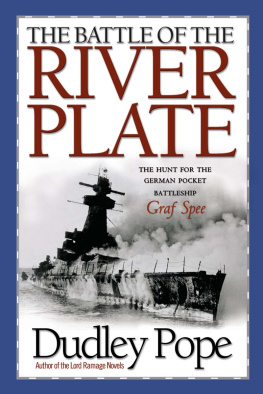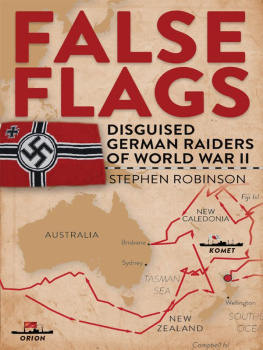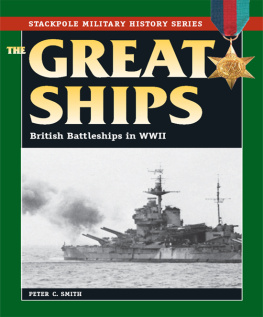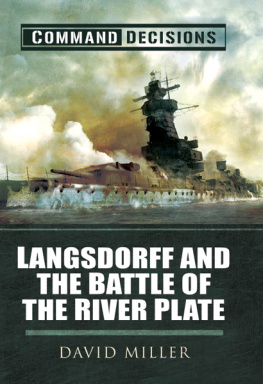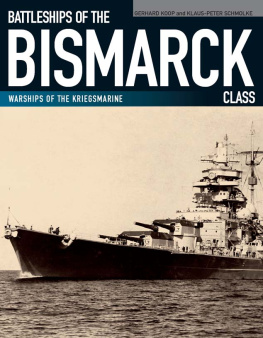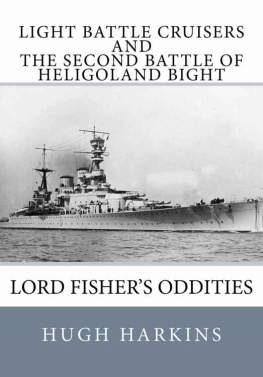

WHITEHALL HISTORIES: NAVAL STAFF HISTORIES
Series Editor: Capt. Christopher Page
ISSN: 1471-0757
GERMAN CAPITAL SHIPS AND RAIDERS IN WORLD WAR II
NAVAL STAFF HISTORIES
Series Editor: Capt. Christopher Page
ISSN: 1471-0757
Naval Staff Histories were produced after the Second World War in order to provide as a full an account of the various actions and operations as was possible at the time. In some cases the Histories were based on earlier Battle Summaries written much sooner after the event, and designed to provide more immediate assessments. The target audience for these Naval Staff Histories was largely serving officers; some of the volumes were originally classified, not to restrict their distribution but to allow the writers to be as candid as possible.
The Evacuation from Dunkirk: Operation Dynamo, 26 May4 June 1940
With a preface by W.J. R. Gardner.
Naval Operations of the Campaign in Norway, AprilJune 1940
With a preface by Christopher Page
The Royal Navy and the Mediterranean, Vol I: September 1939October 1940
With an introduction by David Brown
The Royal Navy and the Mediterranean, Vol. II: November 1940December 1941
With an introduction by David Brown
German Capital Ships and Raiders in World War II
Vol. I: From Graf Spee to Bismarck, 19391941
Vol. II: From Scharnhorst to Tirpitz, 19421944
With an introduction by Eric Grove
The Royal Navy and the Palestine Patrol
Ninian Stewart
GERMAN CAPITAL SHIPS AND RAIDERS IN WORLD WAR II
VOLUME I:
FROM GRAF SPEE TO BISMARCK, 19391941
With an Introduction by
ERIC GROVE
University of Hull
With a Foreword by
THE FIRST SEA LORD
First published in 2002 by Frank Cass Publishers
This edition published 2012 by Routledge
2 Park Square, Milton Park, Abingdon, Oxon OX14 4RN
711 Third Avenue, New York, NY 10017
Routledge is an imprint of the Taylor & Francis Group, an informa business
Crown Copyright 2002
British Library Cataloguing in Publication Data
German capital ships and raiders in World War II
Vol. 1: From Graf Spee to Bismarck, 19391941 with an introduction by Eric Grove with a foreword by the First Sea Lord. (Naval staff histories)
1. Germany. Kriegsmarine History 2. World War, 19391945 Naval operations, German
I. Grove, Eric
940.5'45943
ISBN 0-7146-5208-3 (cloth)
ISSN 1471-0757
Library of Congress Cataloging-in-Publication Data
German capital ships and raiders in World War II/[Eric Grove, editor]; with an introduction by Eric Grove.
v.cm. (Whitehall histories. Naval staff histories, ISSN 1471-0757)
Contents: v. 1. From Graf Spee to Bismarck, 19311941 v. 2. From Scharnhorst to Tirpitz, 19421944.
ISBN 0-7146-5208-3 (v.1: cloth) ISBN 0-7146-5283-0 (v.2: cloth)
1. World War, 19391945 Naval operations, British. 2.
BattleshipsGermanyHistory20th century. 3. CruisersGermanyHistory20th century. 4. World War, 19391945Naval operations, German. I. Grove, Eric. II. Series.
D771.G38 2002 |
940.54'5941-dc21 | 2002019225 |
Production co-ordination by Mike Moran
Published on behalf of the Whitehall History Publishing Consortium. Applications to reproduce Crown copyright protected material in this publication should be submitted in writing to: HMSO, Copyright Unit, St Clements House, 2-16 Colegate, Norwich NR3 1BQ. Fax: 01603 723000.
E-mail: copyright@hmso.gov.uk
CONTENTS
. Victory at the River Plate (a); the German armoured ship Admiral Graf Spee burns after being blown up by its own crew off Montevideo on the evening of 16 December 1939.
. Victory at the River Plate (b); as the Graf Spee burns, the British cruisers waiting in the Plate cheer.
. The cruiser Suffolk played a vital role in shadowing the Bismarck.
. The mighty Hood, which led the first attack on Bismarck in the Denmark Strait and blew up with the loss of all but three of her 1,421 men.
. Bismarck in action against HMS Hood, as seen from Prinz Eugen.
. The view from Prinz Eugen apparently not long after Hood had blown up.
. A third view from Prinz Eugen clearly showing the results of the damage inflicted by Prince of Wales.
. Also in pursuit was Home Fleet flagship King George V said aircraft carrier Victorious, here seen together at sea in October 1941.
. The nine Swordfish of 825 Squadron form up on the deck of HMS Victorious before their attack on Bismarck.
. Although crippled, at the outset of her final action Bismarck could still shoot with some accuracy. Here 15-inch shells land close to the battleship Rodney.
. The raider Atlantis burns as she is sunk by HMS Devonshire on 21 November 1941.
. The armed merchant cruiser HMS Carnarvon Castle, which fought an unsuccessful engagement with the raider Thor on 5 December 1940.
These volumes are a compendium edition of five Battle Summaries and two Naval Staff Histories dealing with some of the larger units of the German surface fleet in the Second World War. Battle Summaries were classified reports written as quickly as possible after events, so that lessons could be learned. Some of these were later converted into Naval Staff Histories when information became available from German sources. This volume covers some of the most momentous actions of the War, including the chase and destruction of the GRAF SPEE; various actions with enemy disguised raiders and the major surface engagement with the BISMARCK.
When Germany found itself at war in 1939, it was at least four years too soon for the German Navy, whose Plan Z, the proposed construction of a major surface fleet, could not bear fruit until 1944. The German Fleet therefore was never able to dispute command of the sea with the Royal Navy. While they demonstrated that sufficient sea control was possible for a very limited time during the Norwegian campaign, from the outbreak of war they were committed to a guerre de course intended to disrupt British trade. These histories reveal both the difficulties of pursuing a policy of commerce raiding by surface vessels, and at the same time, the very large Allied resources required to counter the depredations of relatively few raiders. In addition, these volumes highlight the utility of a fleet in being, to a weaker sea power.
By the most strenuous efforts lasting to the end of the war, the menace of German surface units was eventually nullified. Soon after the war, the German Admiral Weichold wrote a history of the policy and operations of German surface ships in the Second World War, and concluded In the greatest World War of all time, which depended for its outcome on issues determined at sea, the sea and its vast open spaces were regarded by the German Command as of secondary importance. It was the same lesson that, luckily for the British, Germany had not learned from the previous war.



